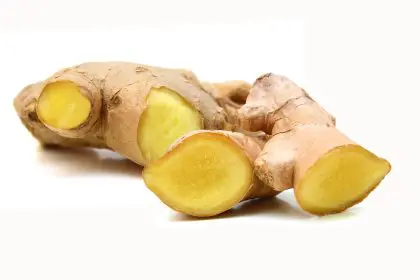In an age of instant solutions and over-the-counter medications, something remarkable is happening in kitchens across the world. People are rediscovering what ancient healers knew centuries ago – that powerful pain relief often grows right in our gardens or sits quietly in our spice cabinets.
Nature’s oldest medicine chest
Long before modern pharmaceuticals, humans relied on natural remedies to address various types of pain. These traditional solutions, passed down through generations, are now finding scientific validation in modern research laboratories. What makes these natural alternatives particularly appealing is their dual role – they not only help manage pain but often provide additional health benefits.
Understanding how natural painkillers work
Natural pain relievers typically function through multiple mechanisms. Many contain compounds that reduce inflammation, while others influence pain perception pathways or promote healing. Unlike some synthetic medications that target a single pathway, natural remedies often provide a more holistic approach to pain management.
The golden root revolution
Ginger stands out as nature’s premier pain-fighting champion. This knobby root contains powerful compounds called gingerols that combat inflammation throughout the body. Recent research suggests that ginger’s pain-relieving properties might rival those of some over-the-counter medications, particularly for certain types of pain.
Modern applications of ginger extend beyond traditional uses. While many know it for addressing nausea, its ability to dilate blood vessels makes it particularly effective for headache relief. The versatility of ginger allows for multiple consumption methods, from fresh juice to concentrated extracts.
The Mediterranean miracle
Rosemary, a staple of Mediterranean cooking, offers more than just culinary appeal. This aromatic herb contains compounds that influence blood vessel dilation, making it particularly effective for tension headaches. Its benefits extend to improving circulation and supporting cognitive function.
The ancient tooth soother
Cloves have been used for dental pain for thousands of years, and modern science supports this traditional application. The active compound eugenol provides both analgesic and antimicrobial properties. This makes cloves particularly valuable for oral health beyond just pain relief.
The golden spice phenomenon
Turmeric has emerged as a superstar in natural pain management. Its active compound, curcumin, demonstrates remarkable anti-inflammatory properties. While traditionally used for digestive discomfort, research now suggests broader applications for various types of pain and inflammation.
The cooling relief master
Peppermint’s versatility in pain management often surprises people. Beyond its familiar cooling sensation, peppermint contains compounds that can influence pain receptors. Its applications range from headache relief to soothing insect bites and muscle aches.
The respiratory relief herb
Thyme’s role in respiratory health extends beyond traditional uses. Modern research suggests its compounds may help relax airway muscles while providing antimicrobial benefits. This dual action makes it particularly valuable during respiratory discomfort.
The unexpected dental ally
Sesame seeds represent an often-overlooked traditional remedy for dental pain. Rich in specific minerals and compounds, they offer both nutritive and pain-relieving properties when properly prepared and applied.
Practical applications and preparations
Understanding proper preparation methods maximizes the effectiveness of these natural remedies. Each herb or spice requires specific handling to preserve its active compounds and ensure optimal benefits.
Creating your natural medicine cabinet
Building a collection of natural pain remedies requires understanding proper storage and shelf life. Different herbs and spices maintain their potency under varying conditions, and knowing these details ensures effectiveness when needed.
Combining remedies safely
While natural remedies generally offer good safety profiles, combining them requires knowledge and careful consideration. Some combinations may enhance benefits, while others might interfere with each other or existing medications.
Understanding limitations and precautions
Natural remedies, while powerful, aren’t always the complete solution. Knowing when to seek professional medical attention remains crucial. Certain conditions require immediate medical intervention, regardless of available natural alternatives.
The science behind traditional wisdom
Modern research continues to validate many traditional uses while uncovering new applications. Understanding the scientific basis helps optimize the use of these natural remedies while identifying potential new applications.
Future directions in natural pain management
Ongoing research explores new applications and combinations of traditional remedies. This evolving understanding helps bridge the gap between traditional wisdom and modern medical practices.
Environmental impact and sustainability
Choosing natural remedies often supports environmental sustainability. Understanding the sourcing and production of these materials helps make informed decisions about their use.
The role of prevention
Many natural pain remedies offer preventive benefits when incorporated into daily routines. This proactive approach often proves more effective than reactive pain management.
















